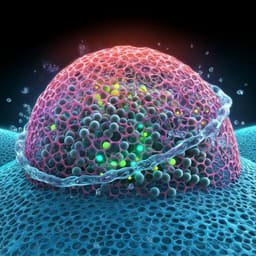
Physics
Mechanisms of blueshifts in organic polariton condensates
T. Yagafarov, D. Sannikov, et al.
Discover the fascinating origins of blueshifts in organic polariton condensates, as Timur Yagafarov and colleagues explore how various factors like the intracavity optical Kerr-effect and polariton interactions contribute to these effects. This research predicts a step-like increase in emission energy at the condensation threshold, providing new insights into the dynamism of these systems.
Playback language: English
Related Publications
Explore these studies to deepen your understanding of the subject.







